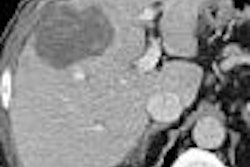Dear CT Insider,
How well does CT detect bone metastases? It depends on how the exam is performed, what kind of lesions are targeted, which modality it's being compared to, and even the relative importance of cost, studies suggest.
A team from the University of Munich in Germany produced two recent studies putting thin-section 16-slice MDCT imaging to the test for detecting musculoskeletal tumors. In the first, MRI was far more sensitive than CT for detecting spinal metastases, inasmuch as MRI saw early soft-tissue changes in the marrow long before the onset of bone damage.
But MRI, whose considerable strengths in soft-tissue imaging are tempered somewhat by its high cost and lengthy exam time, may not always be necessary. A second study by the same German team found that ultra-low-dose CT detected 100% of the osteolytic bone lesions seen at both standard-dose CT and MRI. CT was also more accurate than the standard x-ray workup the hospital had been using. You'll find this Insider Exclusive by clicking here.
Meanwhile, in our CT Digital Community, a related study from the University of Cambridge in the U.K. concluded that skeletal scintigraphy was unnecessary when thin-section MDCT looked for bone metastases in patients with known primary tumors.
This Insider is also brimming with research on two CT mainstays: lung and cardiac imaging. In new studies from France and Belgium, you'll learn how radiologists are combining right ventricular assessment with broader studies of the chest and heart to evaluate patients' atypical chest complaints. Cardiac CT is increasingly becoming a gatekeeper for the cardiac cath lab, suggests a report from this week's American Roentgen Ray Society meeting New Orleans.
And in pulmonary embolism (PE) research, an important new meta-analysis from the Medical University of South Carolina found that CT alone is sufficient to rule out PE, echoing the results of many individual studies AuntMinnie.com has been reporting on.
A PE trial from University Hospitals of Cleveland agreed with the MUSC findings in at least one important respect: MDCT scanners don't perform significantly better than single-slice systems for ruling out lung clots, the researchers concluded, although MDCT did see smaller subsegmental emboli.
That single-slice scanners are enough to rule out PE is great news, of course, but researchers from Geneva University Hospital in Switzerland are still recommending the addition of a D-dimer test when ruling out PE with CT.
Finally, researchers from Europe found that hardware-based PET/CT detected more lung masses than software fusion, through no fault of the software. Scroll down for important news in organ imaging too, all just a click away in your CT Digital Community.




















